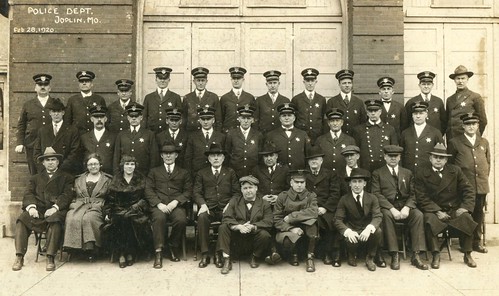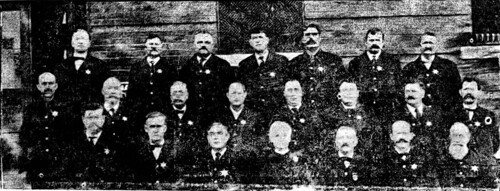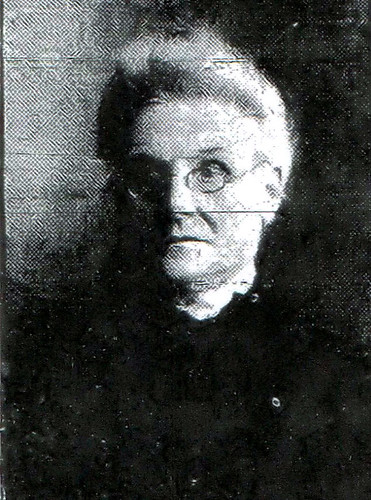Below you will find Joplin’s finest in 1920. The chief at the time was Joseph Myers and the photograph was taken in front of the old city hall. Behind the large doors behind them would have been stored some of the city’s fire engines.
Joplin Police Department 1907 (Correction: 1902)
Another in our “We Wish We Had the Originals” series of photographs, this time with the 1907 Joplin Police Department. If you missed yesterday’s post, here’s the link to the 1907 Joplin Fire Department.
From left to right – Top Line: N.H. Milligan, John Ginsler, C.H. Cole, Henry Burns, Nathan Swift, Perry Snow, J.E. Gilmore. Middle Line: Grant Davis, C.E. Chapman, Fred Sellars, Charles Moore, Joseph Reubart, J.H. Holmes, J.H. McCoy, J.H. Johnson. Bottom Line: Night Captain Thomas Lawson, Day Captain T.F. Ogburn, Marshal Joseph H. Myers, Police Matron Ellen Ayers, Deputy Marshall J.J. Cofer, Joseph Giles, James A. Rose
Of note: See here for more information on the police matron, Ellen Ayers, (who’s seated in the front row).
A Changing of the Police Guard
An early ritual of the Joplin Police Department concerned the changing of the guard between new officers and old upon the assumption of a new police chief into office. One of the powers of the chief was the appointment of selected officers, a relic of the days of political patronage. In April, 1911, such a changing of the guard occurred and was described in a city paper.
“At midnight tonight the forces of the police will change from the present “bulls” to the new assignment which Chief Myers has selected. At that time every prisoner in the city jail that is not held on a state warrant will be released so that the new force may enter with a clean slate.”
The preparation involved in this change concerned snipping brass buttons from coats and polishing the stars that the policemen wore to mark their station. These two things, plus revolvers, were to be handed over by the old guard to the new upon the stroke of midnight. The newspaper noted that most of the police force was to be dismissed with only a few experienced veterans retained. Those who were about to lose their jobs were expected to go into mining, many of which who claimed they intended to prospect rather than go into the earth for others.
The dramatic signal to bring all the police to the station was to turn on every red traffic light across the city. After the policemen had returned to the headquarters for the exchange of stars, buttons, and pistols, it was estimated 30 prisoners would be released. The recently freed criminals would not have long to play upon the streets of Joplin without oversight, as beats were already assigned to the new officers who would immediately take them up as soon as they assumed their new duties.
Source: Joplin News Herald



